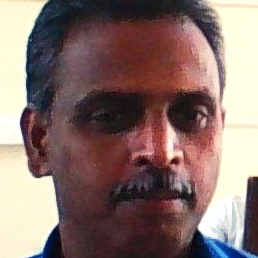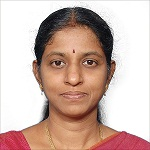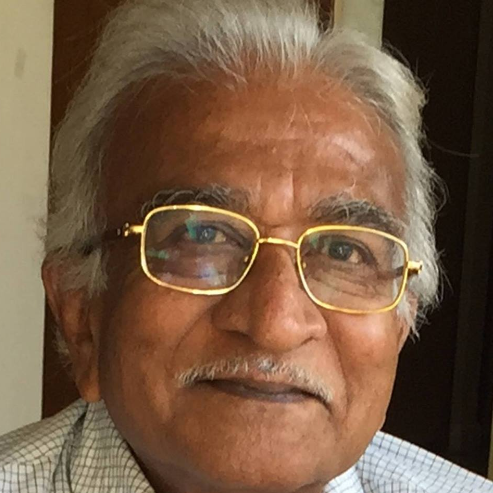International Journal of Intelligent Systems and Applications (IJISA)
IJISA Vol. 10, No. 10, 8 Oct. 2018
Cover page and Table of Contents: PDF (size: 1387KB)
A Formal Model for Legacy System Understanding
Full Text (PDF, 1387KB), PP.27-41
Views: 0 Downloads: 0
Author(s)
Index Terms
Legacy System Understanding, Artefacts, Reverse Engineering, Migration, Formal Model, Legacy Systems
Abstract
Migration of legacy system is not a single step activity but a process that comprises of several phases of which Legacy System Understanding (LSU) is the first step. The intent of this work is to carry out a detailed study on the Legacy System Understanding in terms of Techniques and Tools used and to identify the potential gaps in them. The understanding of the legacy system has to be at the perspective of system level rather than the code level which has a narrow perspective, because the migration at code level may have a cascading impact to different aspects of the Legacy System. These findings have enabled us to formulate a process for building up an artefact repository and artefact dependency repository. These repositories along with the legacy system have aided us in understanding the legacy system in a comprehensive manner in terms of migrating artefacts in the context of migration of legacy systems. A formal mathematical model for representing the status of LSU and application of the same on a case study has been presented.
Cite This Paper
A.Sivagnana Ganesan, T.Chithralekha, M. Rajapandian, "A Formal Model for Legacy System Understanding", International Journal of Intelligent Systems and Applications(IJISA), Vol.10, No.10, pp.27-41, 2018. DOI:10.5815/ijisa.2018.10.04
Reference
[1]S. Comella-Dorda, K. Wallnau, R. C. Seacord, and J. Robert, “A survey of black-box modernization approaches for information systems,” in Proceedings of the International Conference on Software Maintenance (ICSM’00), 2000, p. 173.
[2]A. Sivagnana ganesan and T. Chithralekha, “A Survey on Survey of Migration of Legacy Systems,” in Proceedings of the International Conference on Informatics and Analytics,ACM, 2016, p. 72.
[3]B. Wu, D. Lawless, J. Bisbal, J. Grimson, V. Wade, D. O’Sullivan, and R. Richardson, “Legacy Systems Migration - A Method and its Tool-kit Framework,” in Proceedings of the APSEC’97/ICSC’97: Joint 1997 Asia Pacific Software Engineering Conference and International Computer Science Conference. Hong Kong, China, 1997, pp. 312–320.
[4]R. Khadka, A. Saeidi, A. Idu, J. Hage, and S. Jansen, “Legacy to SOA Evolution: A Systematic Literature Review,” A.D. Ionita, G. Lewis & M. Litoiu (Eds.) Migrating to SOA and Cloud Environments: Challenges in Service Oriented Architecture and Cloud Computing Environments: IGI Global, 2013. [Online]. Available:http://www.igi-global.com/chapter/lega cy-soa-evolution/72212.
[5]M. Srinivas, G. Ramakrishna, K. Rajasekhara Rao, and E. Suresh Babu, “Analysis of legacy system in software application development: A comparative survey,” Int. J. Electr. Comput. Eng., vol. 6, no. 1, pp. 292–297, 2016.
[6]R. Khadka, A. Saeidi, S. Jansen, and J. Hage, “A structured legacy to SOA migration process and its evaluation in practice,” c2013 IEEE 7th Int. Symp. Maint. Evol. Serv. Cloud-Based Syst. MESOCA 2013, vol. 4, no. March, pp. 2–11, 2013.
[7]S. Alahmari, D. De Roure, and E. Zaluska, “A Model-Driven Architecture approach to the efficient identification of services on Service-Oriented Enterprise Architecture,” in Proceedings - IEEE International Enterprise Distributed Object Computing Workshop, EDOC, 2010, pp. 165–172.
[8]R. Khadka, G. Reijnders, A. Saeidi, S. Jansen, and J. Hage, “A Method Engineering Based Legacy to SOA Migration Method,” in Proceedings of the 27th International Conference on Software Mainenance(ICSM), 2011, pp. 163–172.
[9]A. E. Roger, “Migration of Legacy Information System based on Business Process Theory,” Int. J. Comput. Appl., vol. 33, no. 2, pp. 27–34, 2011.
[10]S. P. Reiss, “Constraining software evolution,” in International Conference on Software Maintenance, 2002. Proceedings., 2002, pp. 162–171.
[11]J. Cha, C. Kim, and Y. Yang, “Architecture Based Software Reengineering Approach for Transforming from Legacy System to Component,” pp. 266–278, 2004.
[12]J. Lavery, C. Boldyreff, B. Ling, and C. Allison, “Modelling the evolution of legacy systems to Web-based systems,” J. Softw. Maint. Evol. Res. Pract., vol. 16, no. 1–2, pp. 5–30, 2004.
[13]A. Erradi, S. Anand, and N. Kulkarni, “Evaluation of Strategies for Integrating Legacy Applications as Services in a Service Oriented Architecture,” in Proceedings of the IEEE International Conference on Services Computing SCC06, 2006, pp. 257–260.
[14]Y. Pena, D. Correal, and T. Hernandez, Reusing legacy systems in a service-oriented architecture: A model-based analysis, vol. 6413 LNCS. 2010.
[15]M. Sneed, “Planning the Reengineering of Legacy Systems,” IEEE Softw., vol. 12, no. 1, pp. 24–34, 1995.
[16]F. Arcelli, C. Tosi, and M. Zanoni, “Can design pattern detection be useful for legacy system migration towards SOA?,” Proc. 2nd Int. Work. Syst. Dev. SOA Environ. SDSOA ’08,Germany, pp. 63–68, 2008.
[17]D. Binkley, “Source Code Analysis : A Road Map Source Code Analysis : A Road Map,” in Proceedings of the Future of Software Engineering FOSE ’07, 2007, pp. 104–119.
[18]M. Razavian and P. Lago, “A systematic literature review on SOA migration,” Jourrnal SoftwareEvolution Process, vol. 27, no. May, pp. 337–372, 2015.
[19]E. Stroulia, P. Iglinski, and P. Sorenson, “User Interface Reverse Engineering in Support of Interface Migration to the Web,” World Wide Web Internet Web Inf. Syst., pp. 271–301, 2003.
[20]S. R. Tilley, S. Paul, and D. B. Smith, “Towards a framework for program understanding,” in WPC ’96. 4th Workshop on Program Comprehension, 1996, pp. 19–28.
[21]A. A. Belevantsev, E. A. Veselevich, and V. P. Ivannikov, “Analysis of Entities in C and C ++ Programs and Relations between Them for Program Understanding,” Program. Comput. Softw., vol. 42, no. 1, pp. 49–53, 2016.
[22]P. Bhallamudi and S. Tilley, “SOA migration case studies and lessons learned,” in 2011 IEEE International Systems Conference, 2011, pp. 123–128.
[23]F. Cuadrado, B. García, J. C. Dueñas, and H. A. Parada, “A Case Study on Software Evolution towards Service-Oriented Architecture,” in 22nd International Conference on Advanced Information Networking and Applications -Workshops,Okinawa, Japan, 2008, pp. 1399–1404.
[24]S. Li and L. Tahvildari, “E-BUS : A Toolkit for Extracting Business Services from Java Software Systems,” in Proceedings of Companion of the 30th international conference on Software engineering ICSE Companion ’08, Leipzig,Germany, 2008, pp. 961–962.
[25]Z. Zhang, R. Liu, and H. Yang, “Service Identification and Packaging in Service Oriented Reengineering,” in Proceedings of the 17th International Conference on Software Engineering and Knowledge Engineering, 2005.
[26]G. Mazlami, J. Cito, and P. Leitner, “Extraction of Microservices from Monolithic Software Architectures,” in 2017 IEEE International Conference on Web Services (ICWS), 2017.
[27]A. Ahmad and M. A. Babar, “A framework for architecture-driven migration of legacy systems to cloud-enabled software,” in Proceedings of the First International Conference on Dependable and Secure Cloud Computing Architecture - DASCCA ’14, 2014, pp. 1–8.
[28]R. Heckel, R. Correia, C. Matos, M. El-Ramly, G. Koutsoukos, and L. Andrade, “Architectural transformations: From legacy to three-tier and services,” in Software Evolution, 2008, pp. 139–170.
[29]S. Tilley, “A Reverse- Engineering Environment Framework,” 1998. [Online]. Available: http://resources.sei.cmu.edu/library/asset-view.cfm?AssetID=13047. [Accessed: 15-Jun-2017].
[30]S. Li, F. Chen, Z. Liang, and H. Yang, “Using Feature-Oriented Analysis to Recover Legacy Software Design for Software Evolution .,” in Proceedings of the 17th International Conference on Software Engineering and Knowledge Engineering (SEKE’2005), Taipei, Taiwan, Republic of China, 2005, pp. 336–341.
[31]G. Canfora, A. R. Fasolino, G. Frattolillo, and P. Tramontana, “A wrapping approach for migrating legacy system interactive functionalities to Service Oriented Architectures,” J. Syst. Softw., vol. 81, no. 4, pp. 463–480, 2008.
[32]P. Dugerdil and D. Sennhauser, “Applying financial time series analysis to the dynamic analysis of software,” in proceedings of the 4th International Conference on Software and Data Technologies, Sofia, Bulgaria, 2002, pp. 194–201.
[33]H. Y. Huang, H. F. Tan, J. Zhu, and W. Zhao, A lightweight approach to partially reuse existing component-based system in service-oriented environment, vol. 5030 LNCS. Springer, Berlin, Heidelberg, 2008.
[34]Z. Zhang, D. D. Zhou, H. J. Yang, and S. C. Zhong, “A service composition approach based on sequence mining for migrating e-learning legacy system to SOA,” Int. J. Autom. Comput., vol. 7, no. 4, pp. 584–595, 2010.
[35]C. Zillmann, A. Winter, A. Herget, W. Teppe, M. Theurer, A. Fuhr, T. Horn, V. Riediger, U. Erdmenger, U. Kaiser, D. Uhlig, and Y. Zimmermann, “The SOAMIG Process Model in Industrial Applications,” in 15th European Conference on Software Maintenance and Reengineering (CSMR), 2011, pp. 339–342.
[36]H. M. Sneed and S. H. Sneed, “Creating Web services from legacy host programs,” in Proceedings - 5th IEEE International Workshop on Web Site Evolution: Architecture, Gernmany, 2003, pp. 59–65.
[37]J. Van Geet and S. Demeyer, “Lightweight Visualisations of COBOL Code for Supporting Migration to SOA Lightweight Visualisations of COBOL Code for Supporting Migrating to SOA,” vol. 8, 2008.
[38]P. C. C. Linda M. Northrop and L. O. with Felix Bachmann, John Bergey, Gary Chastek, Sholom Cohen, Patrick Donohoe, Lawrence Jones, Robert Krut, Reed Little, John McGregor, “A Framework for Software Product Line Practice, Version 5,” 2012. [Online].Available: http://www.sei.cmu.edu/productlines/frame_report/config.man.htm. [Accessed: 20-Jul-2017].


